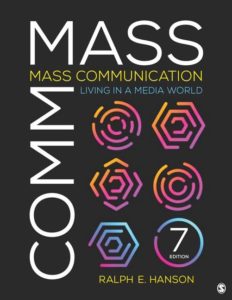
Media literacy is a tricky subject to talk about because few people will admit that they really don’t understand how the media operate and how messages, audiences, channels, and senders interact. After all, since we spend so much time with the media, we must know all about them, right? As an example, most students in an Introduction to Mass Communication class will claim that the media and media messages tend to affect other people far more than themselves. The question of media literacy can also become a political question, for which the answer depends on whether you are a liberal or a conservative, rich or poor, young or old. But the biggest problem in the public discussion of media literacy is that certain routine issues get discussed again and again, while many big questions are left unasked.
The Seven Secrets About the Media “They” Don’t Want You to Know 2.0
Secret 1 The media are essential components of our lives.
Secret 2 There are no mainstream media (MSM).
Secret 3 Everything from the margin moves to the center.
Secret 4 Nothing’s new: Everything that happened in the past will happen again.
Secret 5 All media are social.
Secret 6 Online media are mobile media.
Secret 7 There is no “they.”
Five editions of this book ago, I first came out with the Seven Secrets About the Media “They” Don’t Want You to Know. These were things we don’t typically hear about in the media. Secret things. Perhaps it’s because there is no one out there who can attract an audience by saying these things. Or maybe it’s because the ideas are complicated, and we don’t like complexity from our media. Or maybe it’s because “they” (whoever “they” may be) don’t want us to know them.
But the media world has changed considerably since the secrets were first developed in 2006:
- Netflix had no streaming service—it was only a DVD-by-mail service.
- There was no iPhone—the BlackBerry with its little Chiclet keyboard was the height of smartphone technology.
- There were no tablet computers.
- Cell phone service was typically sold by the minute, and most mobile plans had a limit to the number of text messages that were included in the basic plan.
- Google was in the process of buying a cell phone video sharing service called YouTube created by three former PayPal employees.
- Facebook was only two years old, and use of it was limited to college students.
- Instagram hadn’t yet gone online—that wouldn’t happen until 2010. By 2018, it had eight hundred million active users.
Today, my students tell me they watch most of their video using Netflix streaming, virtually all of them have a smartphone and several social media accounts, and their most frequent way of going online is with a mobile device. So in the sixth edition, it became clear that it was time to update the Seven Secrets to better match the current media world, so we released the Seven Secrets About the Media “They” Don’t Want You to Know 2.0. These key issues of media literacy—which don’t get the discussion they deserve—provide a foundation for the rest of the chapters in this book. (And just who are “they”? Wait for Secret 7.)
(This post give you links to all seven secrets. Teachers – You may want to bookmark this series of posts. If your students don’t all have their books during the first week of class, these can be a big help in getting class started.)
